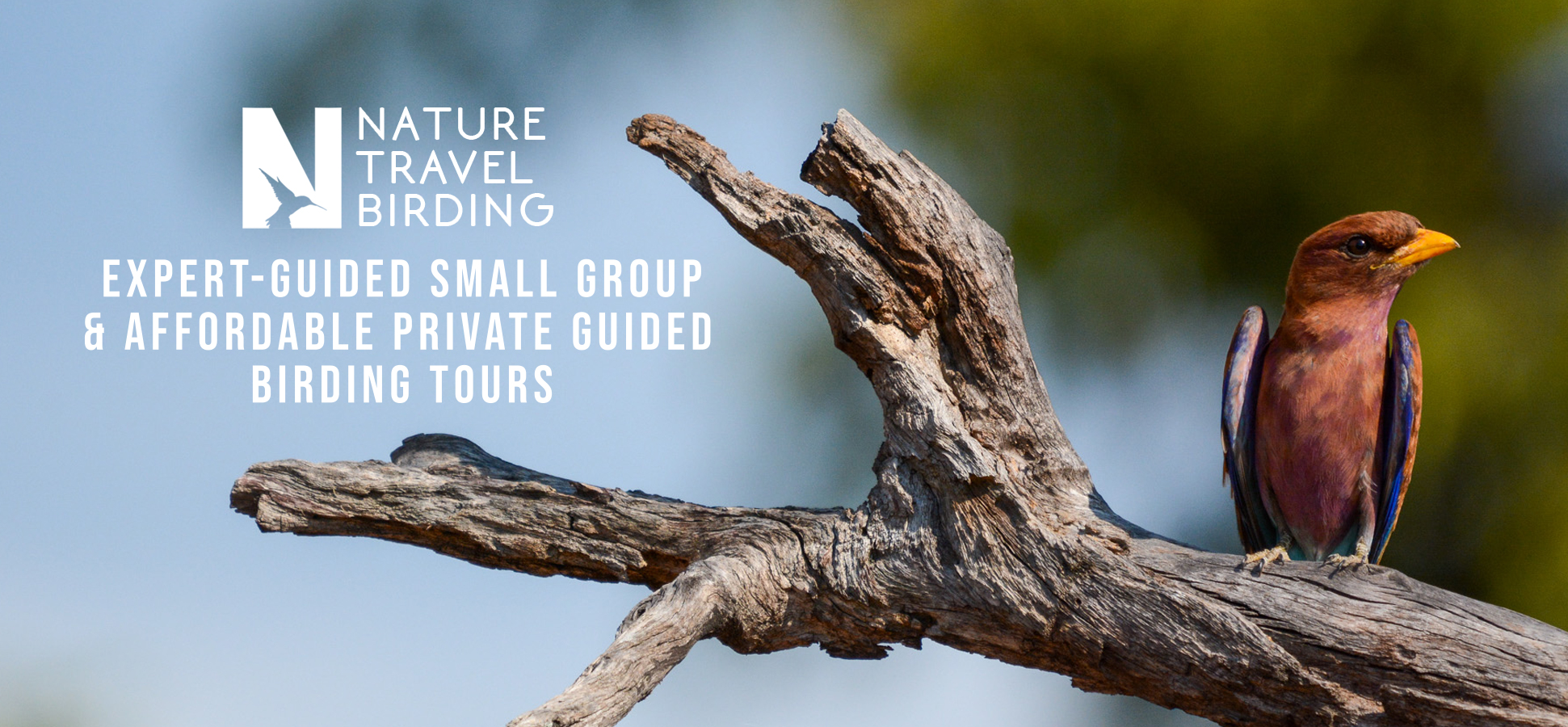Here at Nature Travel Birding we love interesting birds. Whether it’s one that can mimic others in order to confuse predators, or one that has a dazzling courtship display, or one that can achieve incredible feats of endurance or strength, we love interesting birds. The Stresemann’s Bushcrow certainly fits in the category of interesting!

Only discovered in 1938 and initially taxonomically moved from family to family, the species name was assigned in commemoration of the influential German ornithologist, Erwin Stresemann. It is also less commonly known as the Abyssinian Pie. As its name suggests, the species is assumed to be a member of the crow family Corvidae, but this has been widely debated in ornithological circles since the species’ first description.
Currently it sits in its own unique genus with genetic analysis revealing its evolutionary history to be more related to that of the Asian Ground Jays. It is an unmistakable pale grey crow-like medium-sized bird, with a striking black tail and black wings and bright azure-blue around the eyes.
Its evolutionary history is interesting in itself, but the explanation of its range restriction (the species is endemic to central-southern Ethiopia, in a very small area in Sidamo Province), with vast areas of seemingly suitable, unoccupied habitat existing directly adjacent to the species tight range, is nothing short of remarkable. Recent studies suggest that its current area of occupancy is delimited by a climate envelope that harbours a cooler, dryer and more seasonal climate than its surrounding area, but no one knows for sure. The bushcrows prefer flat, open-grass savanna with mature acacia and thornbush stands, with the greatest densities of birds where there are large stands of acacias close to grazing pasture or cultivated fields.
Adding to the complexity of the situation, the Stresemann’s Bushcrows appear unspecialised in their diet and rely heavily on traditional Borana pastoral rangeland for their survival. Their diet consists almost entirely of invertebrates, particularly insects, including larvae and pupae. They forage on the ground, strutting about alone, in pairs or in parties of five or six individuals. They sometimes dig vigorously in the soil, and have also been seen extricating prey from wood in the manner of woodpeckers. Increases in agricultural land, intensification of grazing regimes and a growing human population throughout its range have led to changes in land cover and subsequently to the degradation of the rangeland it depends on.
The Stresemann’s Bushcrow’s breeding usually starts in March, with the birds building their nest high in an acacia tree. The birds usually lay five to six cream eggs with lilac blotches. The nest itself is globular in shape with a tubular entrance on top. It is possible that more than just the breeding pair visit the nest and that the young of previous years help in rearing the new young.
There are currently thought to be only 9000 breeding pairs of these amazing birds left, and the species is currently listed as Endangered on the IUCN Red List of Threatened Species.
For a chance to see these interesting birds and many others, come join us on a Nature Travel Birding tour to the incredible African country of Ethiopia. Ethiopia is one of the most incredible birding destinations in Africa with over 860 species recorded which is about 9.5% of the world’s and 39% of Africa’s birds. For more information, visit www.naturetravelbirding.com or enquire directly at info@naturetravelbirding.com.
